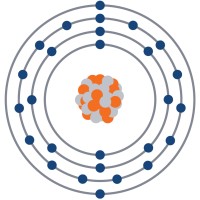Renewable Energy Jobs tagged "Geospatial Analysis"
-
Stirling, Scotland, United Kingdom + 1 locationFlexible Full Time 5 days ago
-
ExpiredCooma, AustraliaOn-site Full Time More than 3 months ago
-
ExpiredCanadaRemote Full Time More than 3 months agoCAD 117k–173k yearly
-
ExpiredCooma, AustraliaOn-site Full Time More than 3 months ago
-
ExpiredHobart, Tasmania, AustraliaFlexible Full Time More than 3 months ago
-
ExpiredBoston, Massachusetts, United States + 1 locationHybrid Full Time More than 3 months agoUSD 76k–89k yearly
-
ExpiredChicago, United States + 1 locationHybrid Full Time More than 3 months ago
-
ExpiredHouston, Texas, United StatesRemote Full Time More than 3 months agoUSD 80k–90k yearly
-
ExpiredWindhoek, NamibiaOn-site Contract Position More than 3 months ago
Geospatial Analysis in Renewable Energy
Geospatial analysis in the renewable energy sector involves the use of geographic information systems (GIS) and other spatial data tools to assess and optimize the placement and performance of renewable energy projects. This discipline is crucial across various sectors, including solar energy, wind farms, and hydropower, where location and environmental factors significantly impact project success.
Typical Responsibilities
Professionals in geospatial analysis are responsible for collecting, analyzing, and interpreting spatial data to inform project planning and decision-making. Tasks often include mapping potential sites for renewable energy installations, assessing environmental impacts, and optimizing resource allocation. They may also develop models to predict energy output based on geographic and climatic conditions.
Required Skills and Qualifications
Candidates typically need a background in geography, environmental science, or a related field, with proficiency in GIS software such as ArcGIS or QGIS. Analytical skills, attention to detail, and the ability to interpret complex data sets are essential. Familiarity with remote sensing and data visualization tools can also be advantageous.
Impact on Renewable Energy Projects
Geospatial analysis supports the growth and efficiency of renewable energy projects by ensuring optimal site selection and resource management. This leads to increased energy output, reduced environmental impact, and improved project sustainability.
Industry Trends and Market Demand
The demand for geospatial analysis in renewable energy is growing as the industry increasingly relies on data-driven decision-making. The integration of machine learning and AI in geospatial tools is enhancing predictive capabilities, making this field even more critical.
Career Opportunities and Pathways
Career opportunities range from entry-level GIS technicians to senior geospatial analysts and project managers. Professionals can advance into roles focusing on system design or project management, leveraging their expertise in spatial data.
Examples of Real-World Applications
Companies like GeoDigital and WindSim utilize geospatial analysis to optimize wind farm layouts and improve energy efficiency. Similarly, startups like Solargis provide solar resource data and performance analysis to enhance solar project planning.
Challenges and Future Directions
Challenges in geospatial analysis include data accuracy and the integration of diverse data sources. However, advancements in satellite technology and data processing are paving the way for more precise and comprehensive analyses, promising a bright future for this field in renewable energy.
Get Job Alerts
Get alerts for Geospatial Analysis jobs
Featured Jobs
Renewable Energy Blog Posts
-

Renewable Energy Forecast for 2030
By 2030, renewables are poised to supply nearly half of global electricity, with solar and wind leading this explosive expansion. In this data-driven piece, we explore job creation forecasts, supply chain bottlenecks, and policy hurdles. -

Fastest Growing Renewable Energy Sector: Data and Trends
In 2023, solar photovoltaics surged by 32.59%, officially making it the fastest-growing renewable energy source worldwide. Yet offshore wind, which soared by 57.87% in 2021, remains a formidable competitor in total electricity output due to its high capacity factor. This concise overview highlights how policy incentives, cost reductions, and manufacturing advances are propelling solar to the forefront of the global energy transition. -

Career Opportunities in Solar Energy
The solar energy sector is experiencing unprecedented growth, with over 7.1 million jobs in solar PV alone as of 2023. For professionals considering a career shift into renewable energy, solar offers pathways across R&D, manufacturing, project development, and operations.















